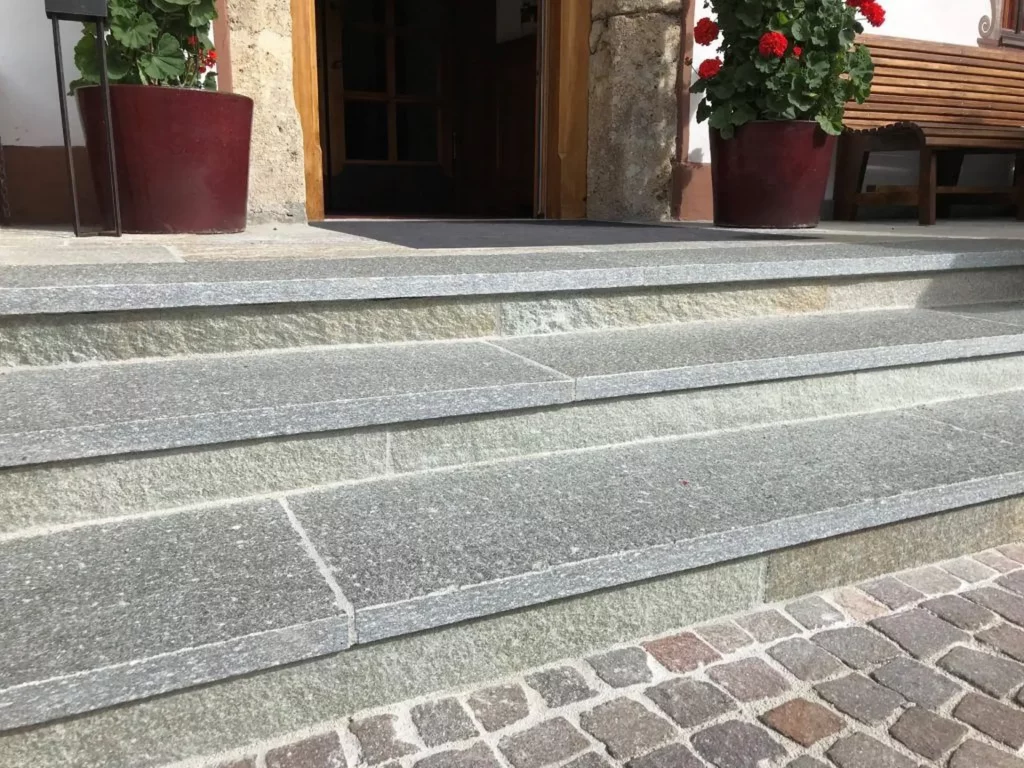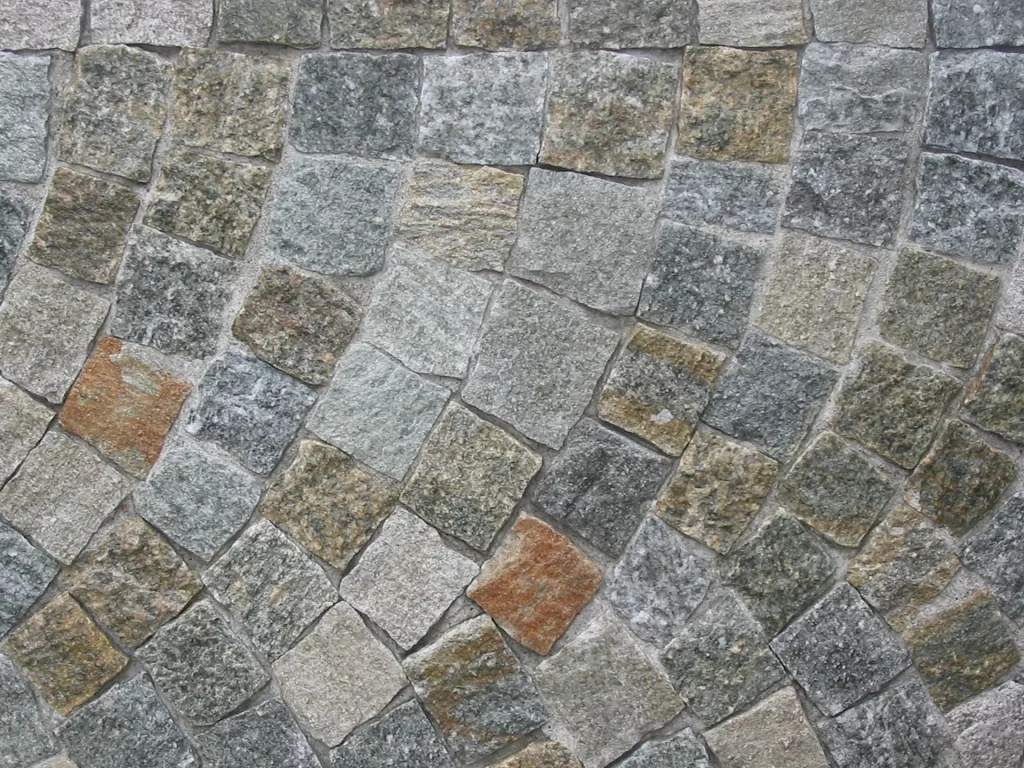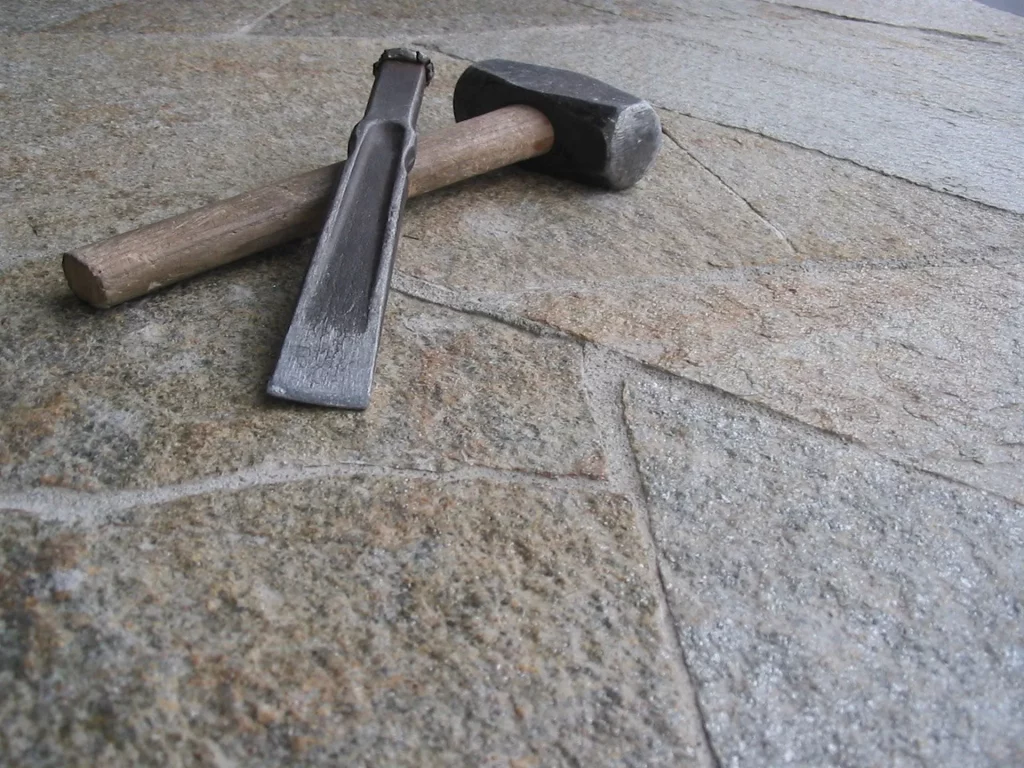Color: Shades of gray, reddish, brownish, greenish
Suitable for: Inside & outside
Cleaning: Easy to clean
When you buy stone, you don't always get what the name says. For example, gneiss is often sold as granite. We will come to the major difference between these two types of stone later in this article. In any case, it doesn't hurt to find out about the different natural stones so that you don't have a rude awakening afterwards when the stone flooring you have laid doesn't have the properties you expected based on the name.
Color: Shades of gray, reddish, brownish, greenish
Suitable for: Inside & outside
Cleaning: Easy to clean
When you buy stone, you don't always get what the name says. For example, gneiss is often sold as granite. We will come to the major difference between these two types of stone later in this article. In any case, it doesn't hurt to find out about the different natural stones so that you don't have a rude awakening afterwards when the stone flooring you have laid doesn't have the properties you expected based on the name.
Gneiss is a metamorphic natural stone and is one of the oldest types of rock. The formation of the metamorphic rock takes place under conditions of high ambient pressure and high temperature, whereby the source material is overlaid by many layers of rock. For example, during the formation of mountains or tectonic plate shifts. Gneiss is composed of several different minerals, such as feldspars, quartz and mica minerals. Depending on the source material and how intense the pressure conditions and temperatures were when the rock was formed, the composition of the rock varies. This can be easily recognized by the different shades of color. Gneiss can be found all over the world. Especially in old continental cores, the so-called cratons. Nowadays, large deposits of the rock exposed by erosion are discovered there time and again.
A distinction is made between 3 types of gneiss, whereby this differentiation is based on the source rocks.
"Feldspar, quartz and mica, I'll never forget the three..." We can probably all remember this saying from geography lessons. This mnemonic describes the composition of orthogneisses. Very often these have undergone several phases of transformation and are formed from pre-existing gneisses. Orthogneisses can be both fine-grained and coarse-grained in their structure.

In contrast to orthogneiss, this type of gneiss is formed from the transformation of sedimentary rocks. Sandstones, graywackes, arkoses and clay shales can be found in the layers.

It is a type of transition rock from metamorphic gneiss to magmatic deep rock.
From a technical point of view, the three types mentioned can be distinguished minimally, they can be recognized in particular by their appearance. Orthogneisses and migmatites are mostly colorful, while paragneisses are usually gray.

As already announced above, we now come to an important difference when it comes to rock types. The difference between gneiss and granite. Although granite is also a deep rock, it is of magmatic origin. This type of rock is formed when molten rock solidifies and comes to the surface over time by eroding overlying layers of rock. The following is relevant for use as a building material or as a design element in interior and exterior areas: Gneiss can absorb more water and has higher flexural strength values, making it more robust than granite.
Due to its properties, gneiss is often used for interior and exterior design. Due to its high density, the stone is very durable, abrasion-resistant and frost-resistant. As gneiss has a particularly non-slip surface and therefore has anti-slip properties, the natural stone slabs are often used for patio floors. Gneiss is also a real eye-catcher due to its color composition. The stone is also popular for walls. Walls made of gneiss are truly unique and are often used in garden design thanks to the wide range of design options.
Due to the way gneiss is formed, the surface of the natural stone has a beautiful marbling. The differences in color can be linear as well as slanted across the surface. Due to its diverse appearance, gneiss is used in both elegant and rustic design elements. The surface of gneiss is originally rough. This characteristic is particularly appreciated in gardens and is therefore left as it is. The result is a rustic touch. For indoor applications, the surface of the natural stone is often ground and polished. This gives the floor slab a matt sheen.
When you buy stone, you don't always get what the name says. For example, gneiss is often sold as granite. We will come to the major difference between these two types of stone later in this article. In any case, it doesn't hurt to find out about the different natural stones so that you don't have a rude awakening afterwards when the stone flooring you have laid doesn't have the properties you expected based on the name.
In interior areas, gneiss creates an invigorating atmosphere thanks to its variety of facets. From robust to elegant - there are virtually no limits to the design possibilities. Thanks to our many years of experience in interior design, we are happy to advise you on all possible design options! Let us inspire you!
The color tones of gneiss are variable. The stone can be found in pink, gray, brown, but also in black and white. This is the basic color, which - depending on how the stone was formed - is interspersed with light or dark marbling.
Due to its properties, gneiss is ideal for: Terrace floors, garden paths, brickwork, floor slabs and much more. Thanks to its appearance, gneiss is a real eye-catcher and is one of the most popular building materials. Get inspiration in our Showroom in Hollabrunn or Vienna! We will be happy to advise you!
Our experts will support you in selecting the right material for your requirements and design wishes, as well as in planning the implementation with gneiss.
